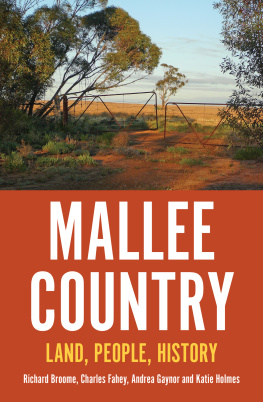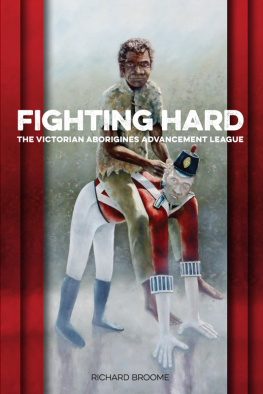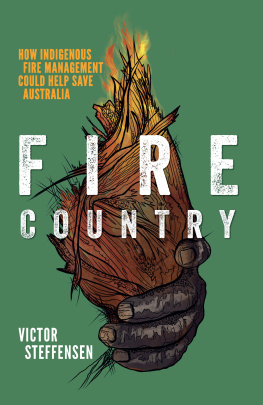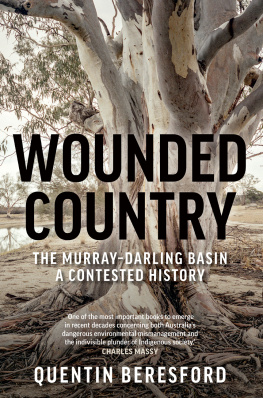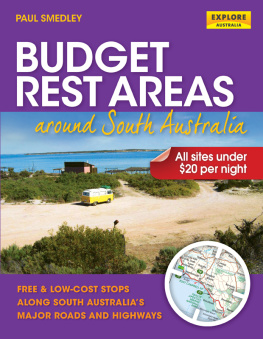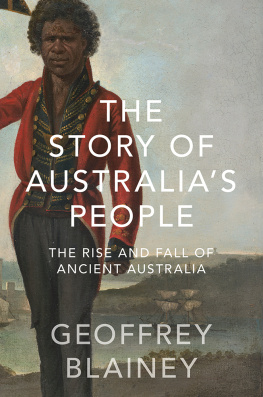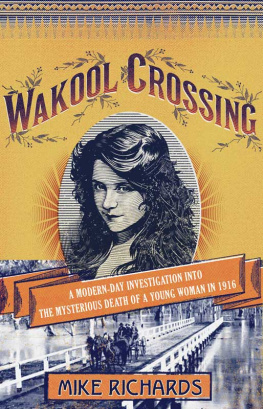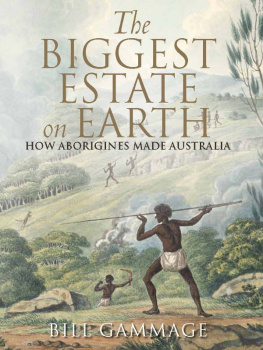Contents
Page List
Guide

Mallee Country
Land, People, History
by
Richard Broome, Charles Fahey,
Andrea Gaynor & Katie Holmes

ABOUT THIS BOOK
Mallee Country tells the compelling history of mallee lands and people across southern Australia from Deep Time to the present. Carefully shaped and managed by Aboriginal people for over 50,000 years, mallee country was dramatically transformed by settlers, first with sheep and rabbits, then by flattening and burning the mallee to make way for wheat. Government-backed settlement schemes devastated lives and country, but farmers learnt how to survive the droughts, dust storms, mice, locusts and salinityas well as the vagaries of international marketsand became some of Australias most resilient agriculturalists. In mallee country, innovation and tenacity have been neighbours to hardship and failure.
Mallee Country reveals how land and people shape each other. It explains how a landscape once derided by settlers as a howling wilderness covered in dismal scrub became home to people who delighted in mallee fauna and flora and fought to conserve it for future generations. It is the story of the dreams, sweat and sorrows of people who face an uncertain future of depopulation and climate change with creativity and hope.
Mallee Country: Land, People, History
Copyright 2020 Richard Broome, Charles Fahey, Andrea Gaynor and Katie Holmes
All rights reserved. Apart from any uses permitted by Australias Copyright Act 1968, no part of this book may be reproduced by any process without prior written permission from the copyright owners. Inquiries should be directed to the publisher.
Monash University Publishing
Matheson Library Annexe
40 Exhibition Walk
Monash University
Clayton, Victoria 3800, Australia
https://publishing.monash.edu
Monash University Publishing brings to the world publications which advance the best traditions of humane and enlightened thought.
Monash University Publishing titles pass through a rigorous process of independent peer review.
ISBN: 9781925523126 (paperback)
ISBN: 9781925523133 (pdf)
ISBN: 9781925523140 (epub)
Series: Australian History
Series Editor: Sean Scalmer
Design: Les Thomas
Cover image: Farm Gate near Manangatang (Courtesy Judy Irvin)
A catalogue record for this book is available from the National Library of Australia.
CONTENTS
In memory of
Janette Bailey
(19642016)
environmental historian
&
and a researcher for this book
PROLOGUE
Mallee Country
Despite wheats centrality to mallee country today, these lands were not always planted to wheat or grazed by sheep. They have an ecological and human history that stretches back to Deep Time, creating unique and startling landscapes. This history, therefore, begins with the land: its flora, fauna, climate and location in southern Australia; and why it is called mallee, sometimes with a capital letter, sometimes not.
* * *
Mallee lands are wondrous, producing a great diversity of flora as plants develop attributes to survive in semi-arid conditions with patchy and low-nutrient soils. The Victorian and South Australian mallee is home to 311 indigenous flora species: including eucalypts, acacia, casuarina, hakeas, grevilleas, melaleucas, boronia, many types of daisy, eight salt-tolerant saltbush varieties, and the spiky porcupine grass, Triodia scariosa.
The brilliant sunshine over mallee country and most of the Australian continent encourages trees and shrubs to produce more carbohydrate than the depleted soils of this ancient continent allow them to convert into plant fibre and seeds. The excess sugars are donated to guests in return for pollination duties. Winged visitorsbirds, bats, beesand climbing guests, such as possums and sugar gliders, luxuriate in blossoms and sugary exudatesmanna, honeydew and, particularly in the eastern mallee, lerp. Lerp is a sugary covering excreted by psyllids and coccids that suck on eucalyptus leaves. They produce white excretions two to four millimetres long that often combine to form small clumps of snowy sweetness on countless leaves. Honeyeaters enter into fierce battles to protect such licking utopias from competitors. Parrots also gnaw at sweet sap oozing from bark, and small birds peck at aphids, which feast on eucalyptus leaves. Sugar is a powerhouse of mallee wildlife.
Mallee woodlands and shrublands are lands of plenty for honeyeaters such as the yellow-throated miners and noisy miners, and for many varieties of parrot including the Regent and Australian Ringneck. Each buries its beak and tongue into the nectar-bearing blossom of scores of different eucalypts, bottlebrush, banksias and other flowering plants. Countless billions of individual blossoms produce nectar for days on end. Different eucalypts flower at different times, making for a generous feast staggered over many months, while insects, aphids and fruits provide a year-round supplement to this sugary excess. Native bees also comb these trees and the myriad of small wildflowers. Each flying species in its own way pollinates the landscape, increasing biodiversity with hybrid plant species adapted to this environment.
Sugars also attract others, including ants in their countless billions running in zig-zag lines up the abundant mallees to take the sweetness exuded by aphids. In 2006, forty-eight different types of ant were identified in the paddocks and remnant vegetation of just five Murray Mallee farms. Ant trails traverse mallee landscapes, forming paths half a metre wide between low dome nests. Echidnas and lizards dine out on these ants. Spectacular jewel beetles, abundant in Western Australian and Murray Mallee country, feast on sugars, their larvae boring into the sapwood of mallees or shrubs and later emerging as adults to feed on mallee nectar or leaves. Pygmy possums, too, feed on nectar, as well as insects, while a range of other marsupials make do with the shoots, seeds and leaves found on and among the mallees.
Insects of all varietiesflies, wasps, crickets and beetlesprovide extra food, adding to the diversity. Alec Chisholm observed thirty species of birds at Victorias Wyperfeld National Park in 1934, most of them found only in mallee or dry country.
In some mallee country, such as the Lake Grace region of Western Australia or the Hattah Lakes in Victoria, the periodic inundation of salt lakes draws vast numbers of darts, native hens, grebes, cormorants, ducks and other water birds. Breeding occurs if the waters are sufficiently deep to resist evaporation for over four months. The Murray Riveredged mallee lands in Victoria and South Australia also provide year-round living for dozens of species of water birds, including ibis, herons, egrets, swans, varieties of duck, terns, coots and cormorants.
* * *
Mallee country is found in three large bands of land across the southern part of Australia (see , and the term is particularly rare in Western Australia, where mallee country forms part ofand stretches beyondthe Wheatbelt. Mallee is used to describe country in South Australia, New South Wales and Victoria, but only in South Australia between the Murray River and the Victorian border is it reified by a capital letter as in Murray Mallee, and only in Victoria does it become, the Mallee.

